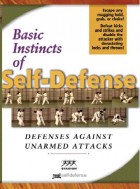Your reply to a suspicious stranger may avert an assault or robbery
When spoken to by a suspicious stranger, reply in a language the stranger doesn’t understand and keep on moving. Replying in a different language is better than not replying at all: No reply leads to repeated attempts of the “test line,” perhaps with closing the distance. An incomprehensible reply confuses first and then makes strangers understand that they can’t communicate with you.
No communication → No compliance
Elaboration:
If a would-be robber speaks to the mark, it means the robber’s plan is based on the assumption that the mark will understand verbal commands and react to them in some expected manner. When the mark doesn’t understand the robber’s language, the plan falls apart; proceeding with the robbery becomes far more risky than what the robber expected. Here are the robber’s options and risks:
1. Do physical harm and risk a much greater penalty than otherwise merited (experienced criminals do calculate those things).
2. Get unsafely close — to just take the stuff — and risk a fight and, if armed, being disarmed, plus the risk in the point above.
3. Act out in pantomime the commands, like in charades. . . . Nah, that’s just too ridiculous.
Another way to look at it: Predators attack easy prey, the kind they have good experience with and know what to expect from. They don’t like the unknown, so they are likely to pass it up.
Recommended reading:
Self-Defense Tip #80 — In a Confrontation Don’t, Part I
Self-Defense Tip #81 — In a Confrontation Don’t, Part II
Self-Defense Tip #82 — In a Confrontation Don’t, Part III
Attention:
Applying any of the techniques mentioned above is your sole responsibility.
Neither Never-Thought-of-It LLC nor the author of this self-defense tip, nor persons pictured in this self-defense tip, make any representation, warranty, or guarantee that the techniques described or shown in this tip will be safe, effective, or legal in any self-defense situation or otherwise.
The reader or viewer assumes all risks and hazards of injury or death to herself, himself, or others, as well as any resultant liability for the use of the techniques and methods contained in this self-defense tip.
Specific self-defense responses demonstrated or described in this self-defense tip may not be justified in certain situations in light of all the circumstances or under the applicable federal, state, or local law. Neither Never-Thought-of-It LLC nor the author of this self-defense tip makes any representation or warranty regarding the legality or appropriateness of any techniques described or demonstrated in this self-defense tip.
Self-defense tip from Thomas Kurz, co-author of Basic Instincts of Self-Defense and author of Science of Sports Training, Stretching Scientifically, and Flexibility Express.
Self-Defense Moves
For your defense moves to work under stress they must be based on your natural, instinctive reactions, require little strength and limited range of motion, and be proven in fighting experience.To learn how your natural reactions can instantly defeat any unarmed attack, see the video Basic Instincts of Self-Defense.
Defend Against Weapons
To defend against weapons you have to know how they are used. Also — every stick has two ends … the weapon of attack may become a weapon of defense in your hand …To learn how the typical street weapons (club, knife, razor) are used by an experienced streetfighter and how to practice with them, see the video Self-Defense: Tools of Attack — Club, Hatchet, Blackjack, Knife, Straight Razor.
Mental Toughness
Staying cool under pressure is more important for self-defense than being physically fit and technically skilled. If you can’t control your mind what can you control?To learn mental techniques that let you calmly face any threat and act rationally in the heat of a fight, click here.
For a complete list of our products, click here.







